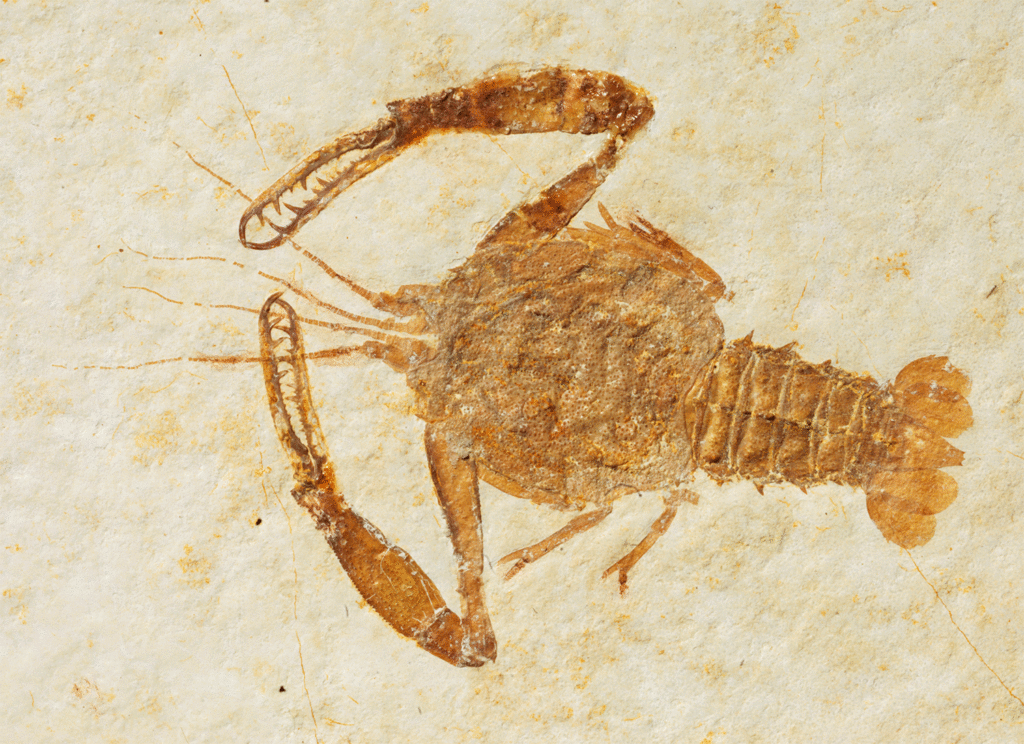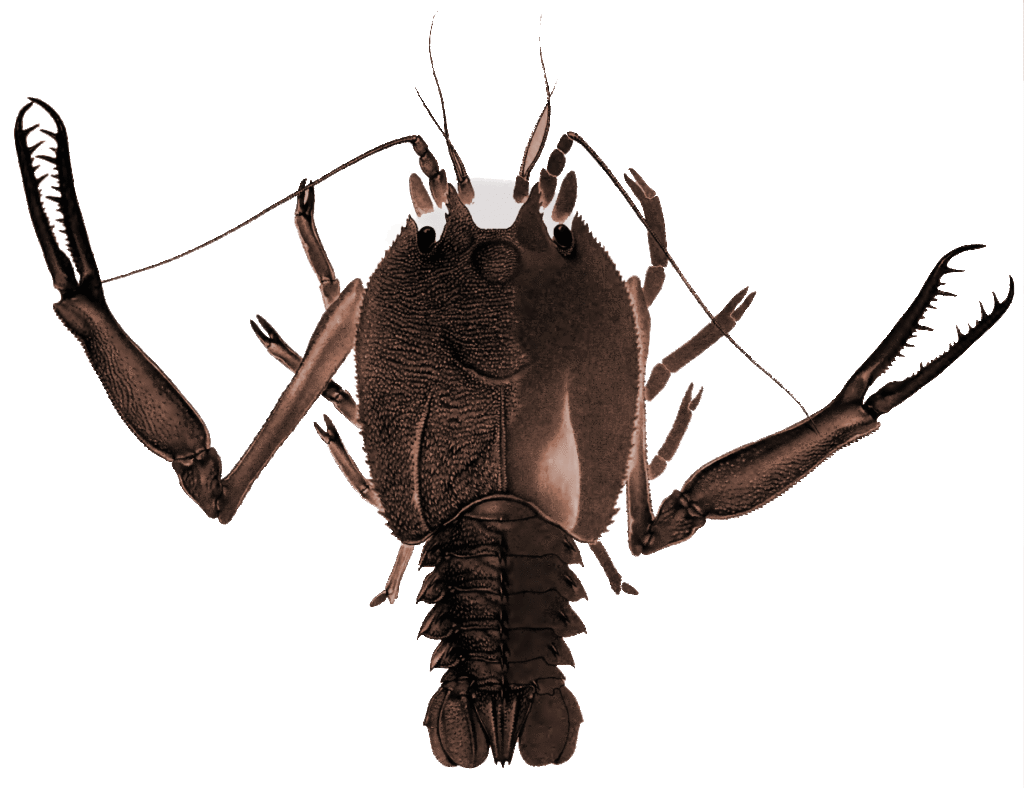July 2025: Polychelid crustacean with pectinate claws
Palaeopentacheles roettenbacheri (Münster, 1839)
BSPG 2022 X 42
Upper Jurassic (Tithonian), ca. 150 million years, Blumenberg, Eichstätt, Upper Bavaria

Palaeopentacheles roettenbacheri is a decapod crustacean from the suborder Polychelida. This group is unique in that they have true claws (chelae) on the first four (sometimes five) walking legs. Of the five known families, only one (the Polychelidae) is still represented today. These crustaceans live in the deep sea (77-5000 m, mostly 500-1500 m) and have greatly reduced eyes. In contrast, the fossil Polychelida mostly originate from shallow-water associated limestones and usually have well-developed compound eyes. Consequently, it was long assumed that the Polychelida have a shallow-water origin. However, more recent studies suggest that the adaptation to great water depths occurred very early and possibly several times in the evolutionary history of the group.
The oldest surviving fossil polychelid comes from the lower Upper Triassic (approx. 228-235 million years ago) of Slovenia. Recent phylogenetic studies suggest that the Polychelida may already have originated in the Devonian period (approx. 372-409 million years ago). The group was very diverse, especially during the Mesozoic. A total of 69 fossil species have been preserved. So the fossil diversity exceeded that of today with only 40 living species.
Due to the unique morphology of its pectinate claws of the first walking leg (P1) (among others), Palaeopentacheles is now placed in a family of its own – the Palaeopentachelidae. The function of the claws has not yet been clearly clarified, but they were most likely involved in food acquisition. It is conceivable that they were used to grope, rake or sieve the seabed for soft-bodied prey. An ontogenetic study has shown that the larva of Palaeopentacheles underwent five developmental stages, from an initially pelagic to a benthic lifestyle. The larva already shared some of the characteristics of today’s Polychelidae, but was not yet as highly developed.
The fossil exhibited here is part of the Haberl Collection, which includes insects, echinoderms, plants and fish from the famous limestones of Solnhofen, Eichstätt, Zandt, Daiting and Painten. Around 150 million years ago, a large ocean, the Tethys, covered major parts of Europe. At the northern edge of this sea, lagoon-like ‘basins’ lined with reefs were formed in many places, in which the very fine-grained limestone was deposited.
Melanie Altner

Reconstruction drawing of Palaeopentacheles roettenbacheri modified after Garassino & Schweigert (2006, Mem. Soc. ital. sci. nat. Mus. civ. stor. nat. Milano). The claws on walking legs 1-4, which are common to all Polychelida, are clearly recognisable, as are the modified pectinate claws on the first pair of the walking legs.



